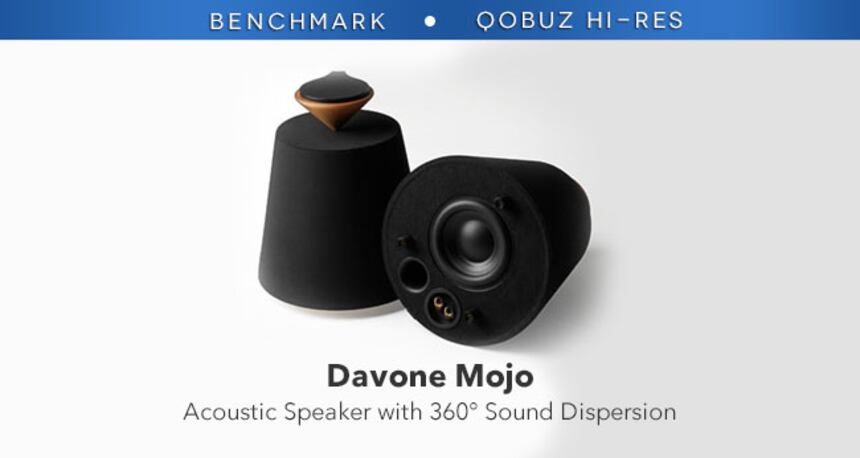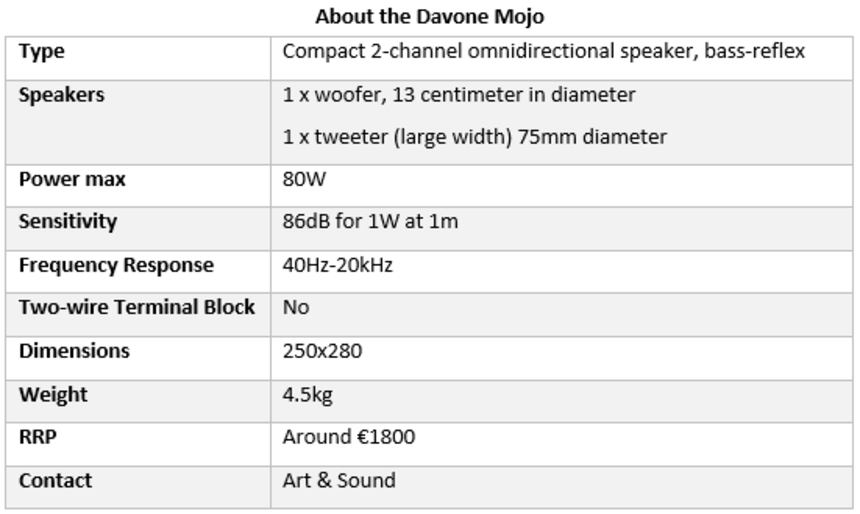The Davone speaker brand hails from Denmark, like prestigious audio brand Bang&Olufsen, who are the undisputed benchmark for design in the field of Hi-Fi. Like their compatriots, they are motivated by the need to combine beauty with functionality.
The first sketches of what would become the first Davone speaker (the Rithm model) date from 1997, and it was in 2005 that the project became a reality thanks to Klavs Bro Olesen, a highly skilled organ builder for churches who conceived the prototype for the Rithm speaker model.
Since then, Davone has become a brand in its own right, and if the Rithm model has disappeared from its catalogue, it currently consist of five models, with the signature product undoubtedly the Grande an upscale inspiration where design meets audio, with its curved cabinet fitting the famous Eames Lounge & Ottoman chair set, but the way in which the speakers converge due to their profile makes on thnk of the BeoVox Uniphase speaker, which emerged in the late 70s.
The Mojo model is the subject of this benchmark and has existed for several years at Davone but is now available in several colors, while a metal stand which can be mounted on the enclosure also makes a first appearance.


Appearance
A quite retro 50s design for the Davone Mojo speaker. The fabric lining is available in five colours, and the diffraction cone can come in a choice of three types of wood (walnut, cherry, maple).

The connection for linking to an amplifier via cable is locating on a terminal on the underside of the body, accepting bare wire or banana plugs. Here we can also find the bass speaker of 13cm in diameter.

All around the speaker is covered with felt to provide a cushion for the reflection of sound waves and there are three 'feet' at the base of the speaker to support it and allow for the powerful soundwaves emitted by the woofer.

Optional support is available and attaches to the bottom of the speaker, after removing the feet and using their threaded inserts, while the vertical tube can be used to guide the connecting cable to the amplifier, with all of this very inconspicuously hidden within the body.
The bass speaker does not benefit from diffractive lens because the frequencies that it must reproduce (up to 200Hz) are not considered to be directional. However, the crossover frequency to the second speaker has forced the manufacturer to choose a broadband speaker to take over, for treating frequencies from 200Hz to 20kHz. This broadband loudspeaker therefore outputs to the wooden cone placed at the top of the to obtain a 360 ° radiation.
Listening
Something that challenged us from a technical perspective is the Mojo's use of a broadband speaker to relay from the woofer at 200Hz, thus covering much of the audio spectrum, including acute, leading to a more demanding analysis from our hi-fi experts.
While listening to the intercontinental 70's hit My Sweet Lord from the album All Things Must Pass by George Harrison we got an immediate and positive response to our questions. Indeed, the Davone Mojo speakers prove themselves more than up to the task of reproducing the accompany guitar chords, which are smooth and sharp in a wide spectrum of sound space. Harrison's voice and the backing choirs also benefit very positively from this expanded space through reflection on an acoustic lens. We did, however, feel like we were lacking a bit of presence, but this may be due to a lower, more discreet register.
With the Mojo model from Davone, L'Allegro ma non troppo, taken from Beethoven's Concerto pour violon and performed by Vera Beths (accompanied by the Tafelmusik Ensemble and directed by Bruno Weil) made for an impressive soundscape. We found the timpani excerpts were not reproduced at the volume expected by more opulent speakers, but we don't want to ask the impossible of the woofer either. This does not affect the overall warmth and quality of sound reproduction, which sheds a wonderful light on a wonderful recording.
The very beautiful Ball Scene by Joseph Hellmesberger, a swirling waltz from the album Entry Of The Gladiators, is admirably-served by the Davone Mojo , which emphasises once again it's lightness and clarity in its diffusion of every note.
With the track The Upsetter from the album Love Letters by Metronomy, loose guitar chords and the voice of the lead singer fill the sound space with warmth and happiness, supported effectively by convincing bass.
To conclude, the Davone Mojo is a speaker that is as enjoyable to look at as it is to listen to, with an aesthetic that is nicely aligned with modern designs and styles.
We would like to thank Art & Sound once again for allowing us to test the Davone Mojo speakers.
To follow everything that happens at Qobuz, like us on Facebook!
If you are a constructer, importer, distributor, or agent in the field of sound reproduction, and would like to contact us, please do so through the following address: newstech@qobuz.com
If you are passionate about the contents of our Hi-Fi Guide, and would like to contact us, then please do so uniquely through the following address: rubriquehifi@qobuz.com


